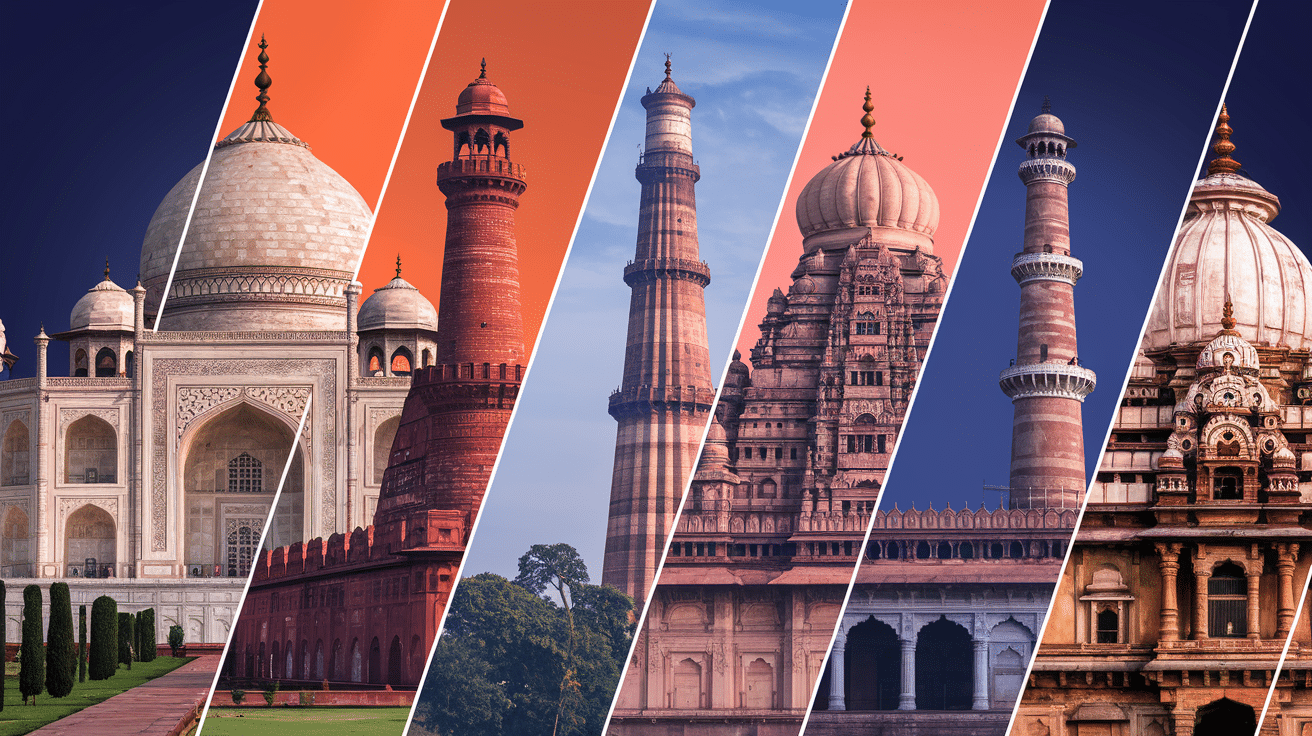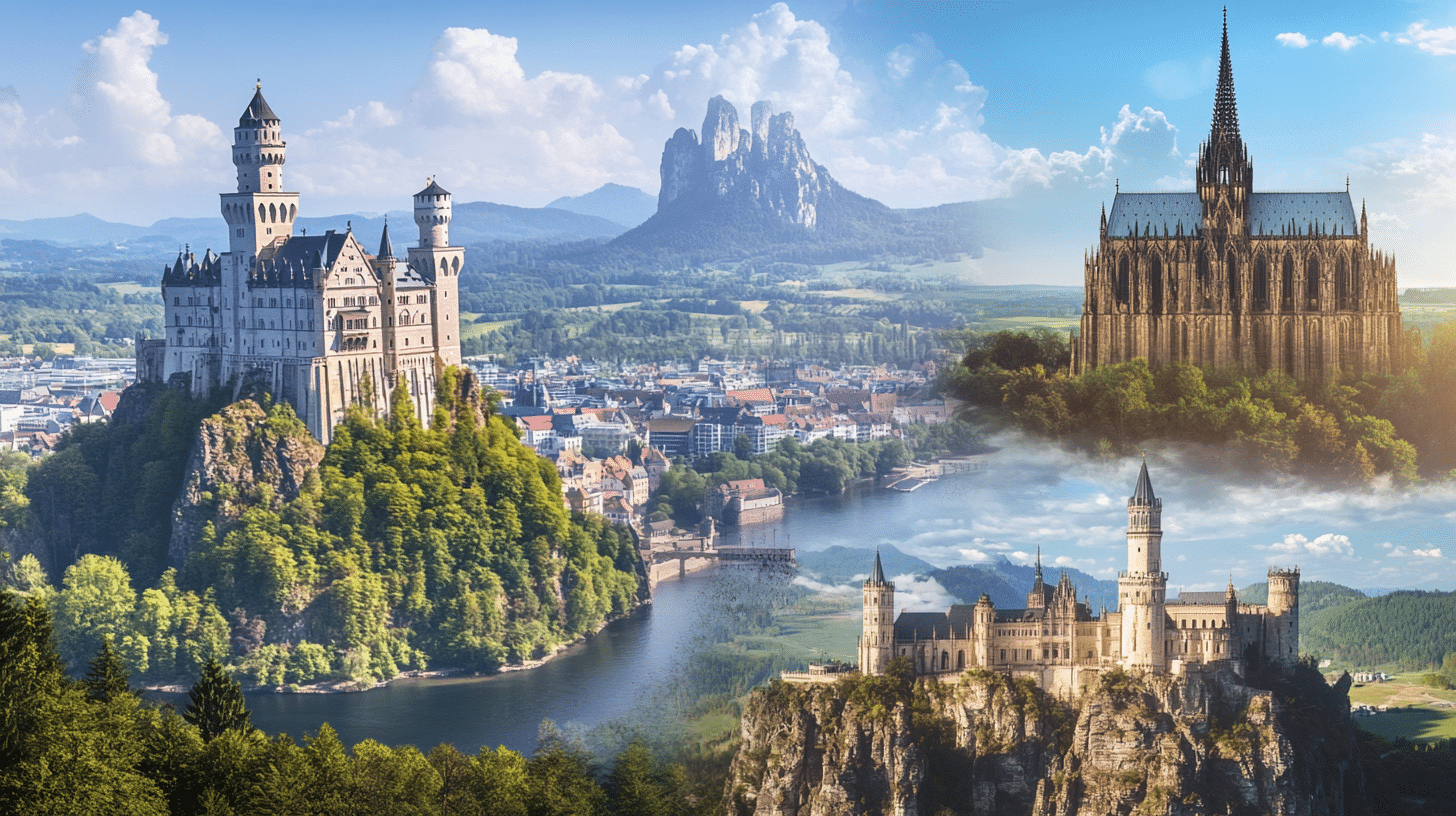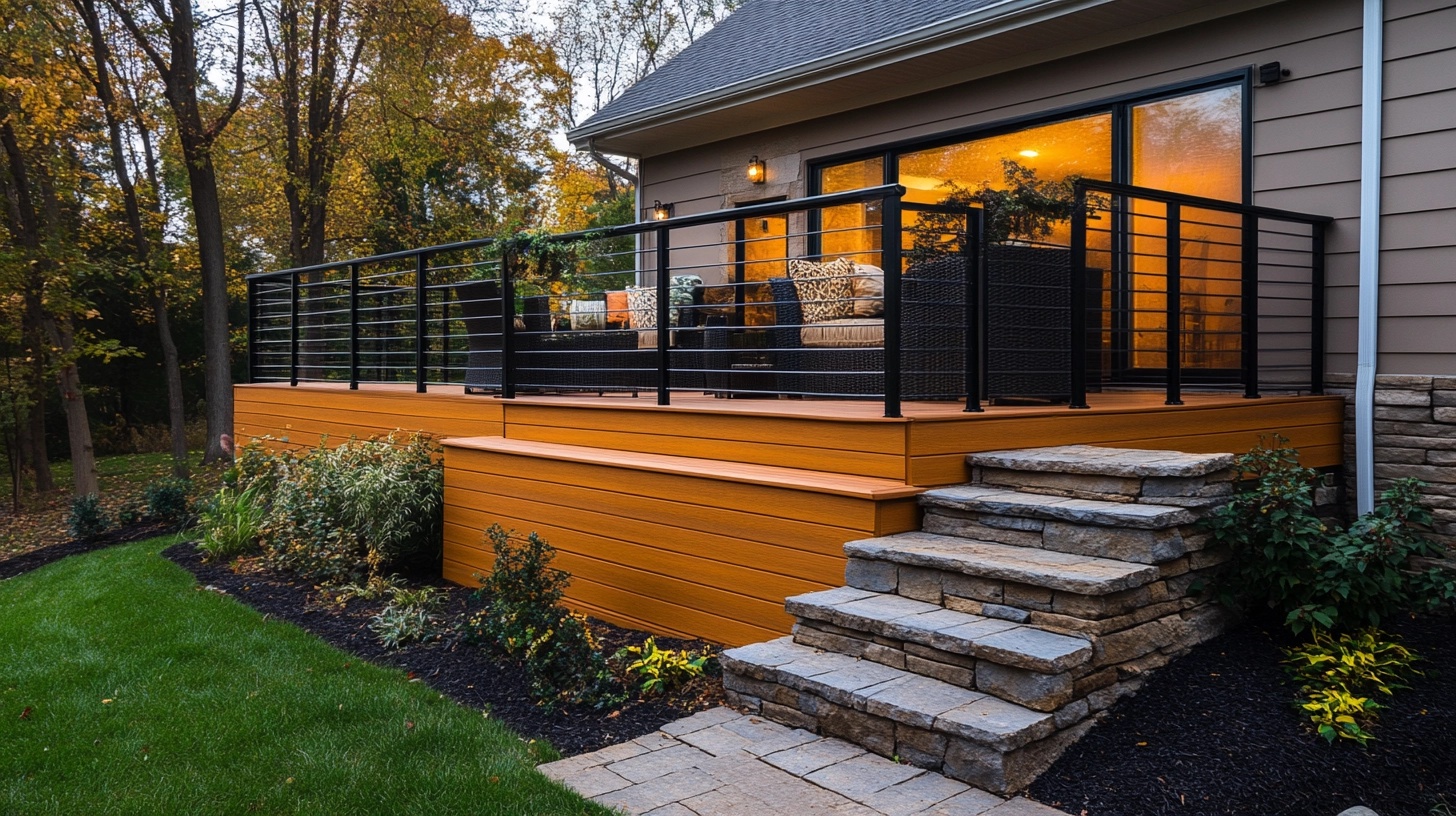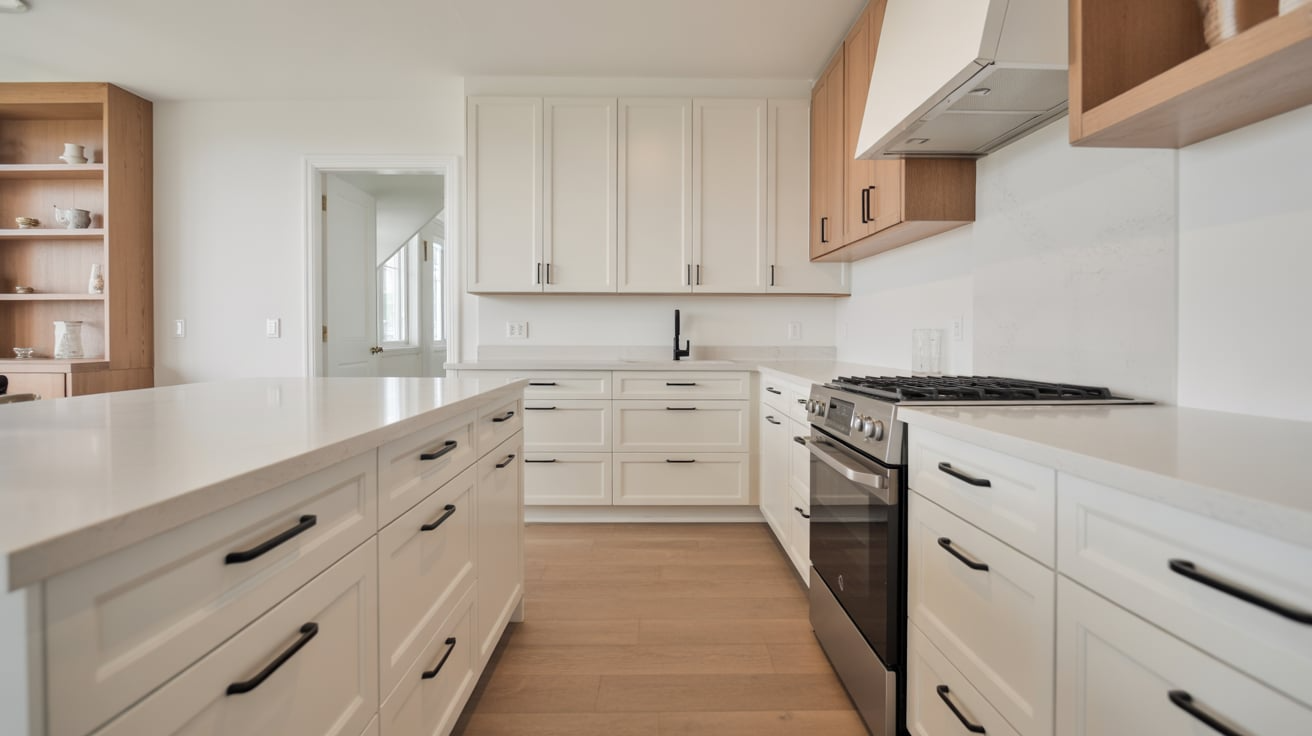15 Most Famous Buildings in India
Have you ever seen a building that left you in awe? India is full of them!
Indian buildings share incredible stories, from giant temples carved from a single rock to palaces that shine with thousands of lights.
These structures weren’t just made to look beautiful—they show how different cultures came together over thousands of years.
Some buildings honor gods, others were homes for kings, and many still serve the same purpose today.
As we look at these amazing places, you’ll see how Indian builders solved tough challenges without the tools we have now.
Let’s take a look at the buildings that represent the heart and spirit of India’s history.
Famous Historical and Cultural Remark
1. Taj Mahal
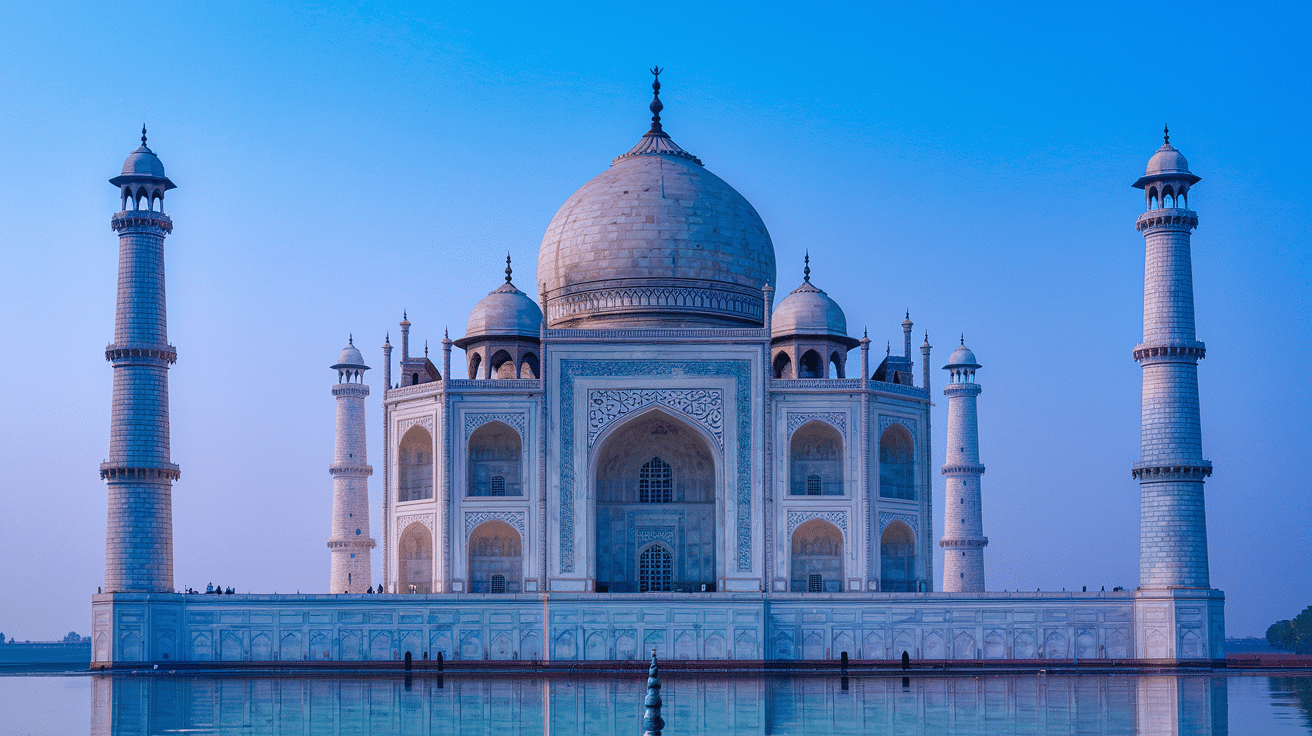
The Taj Mahal in Agra is one of the most recognized buildings in the world. Built by Emperor Shah Jahan in memory of his wife, Mumtaz Mahal, this white marble structure shows the beauty of Mughal design.
The perfect symmetry, intricate marble work, and beautiful gardens make it special.
Construction began in 1632 and took about 22 years to complete. The main dome, which reaches 73 meters in height, is surrounded by four smaller domes.
The walls feature intricate inlay work with precious stones. The marble’s changing appearance throughout the day—pinkish in the morning, white in the evening, and golden in the moonlight—adds to its allure.
Entrance Fees: ₹1,100 for foreign tourists; ₹50 for Indian citizens
Timings: 6:00 AM to 6:30 PM (closed on Fridays)
2. Golden Temple
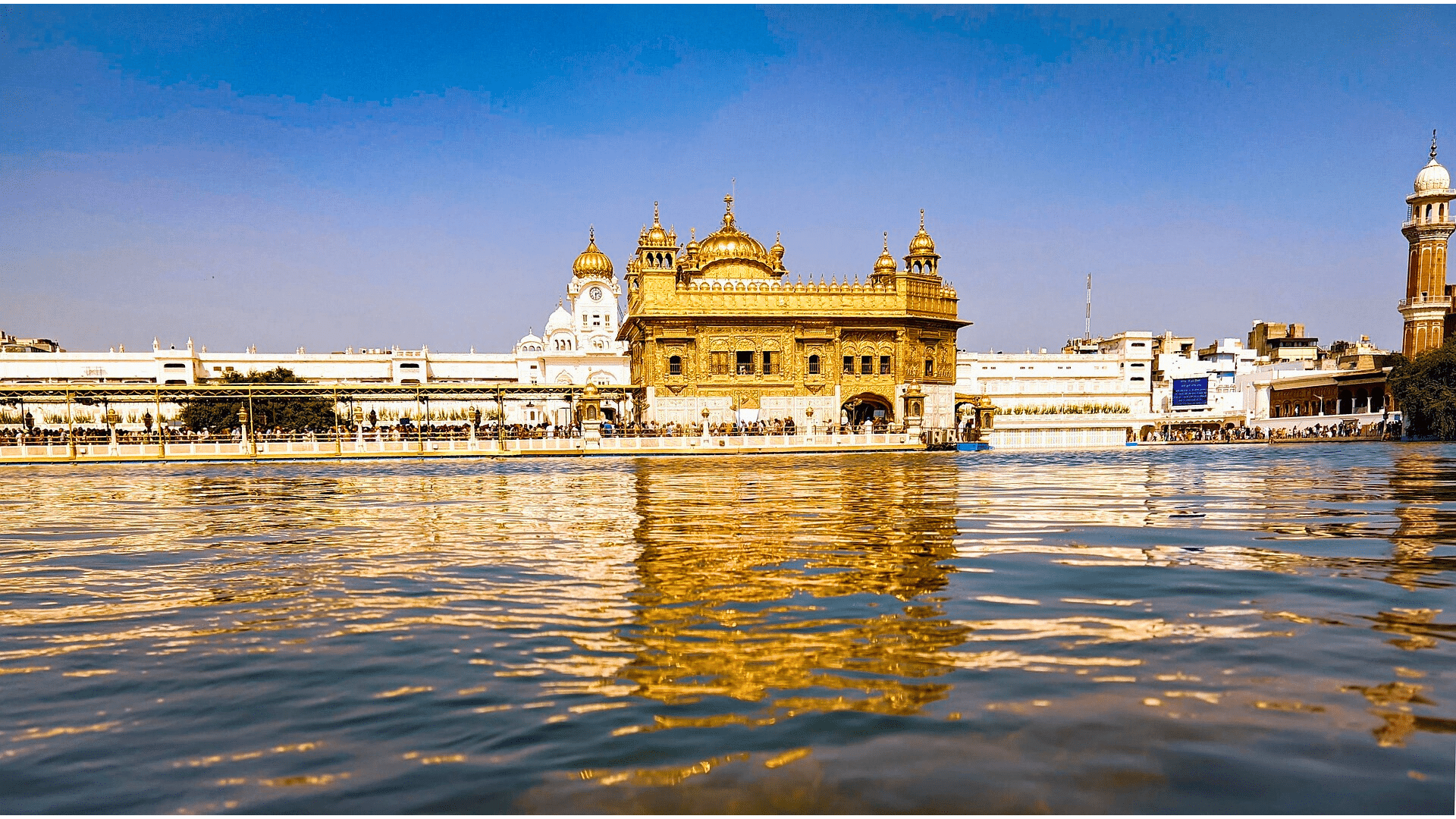
The Harmandir Sahib, commonly known as the Golden Temple, is the central place of worship in Sikhism.
Located in Amritsar, its gold-plated upper floors shine against the water of the sacred pool.
The building combines Hindu and Islamic design elements, showing India’s mixed architectural traditions.
The temple sits in the middle of the Amrit Sarovar (Pool of Nectar). Unlike Hindu temples, it has entrances on all four sides, symbolizing openness to all communities.
The upper portion is covered with 750 kilograms of gold. The complex includes the Akal Takht (Eternal Throne) and the world’s largest free community kitchen, which serves meals to 50,000-100,000 people daily.
Entrance Fees: Free entry for all visitors
Timings: Open 24 hours
3. Red Fort
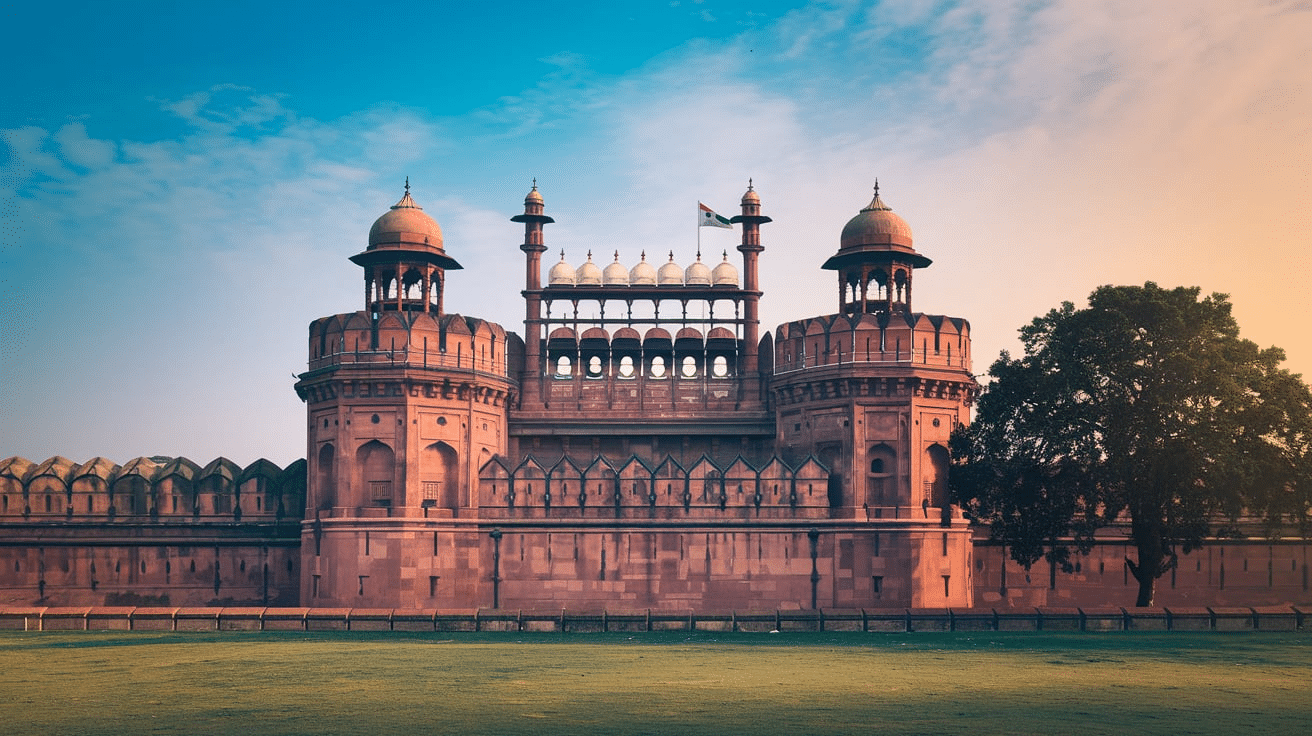
Delhi’s Red Fort, built by Emperor Shah Jahan, gets its name from its massive red sandstone walls.
This UNESCO World Heritage site was the main home of Mughal emperors for nearly 200 years. Its halls, gardens, and detailed marble work show the height of Mughal royal design.
The fort’s walls stretch over 2.5 kilometers and rise 33 meters at their tallest point.
Inside, you’ll find Chhatta Chowk (a covered bazaar), the Diwan-i-Aam (Hall of Public Audience), and the Diwan-i-Khas (Hall of Private Audience).
Every August 15, India’s Independence Day, the Prime Minister hoists the national flag from its ramparts.
Entrance Fees: ₹600 for foreign tourists; ₹35 for Indian citizens
Timings: 9:30 AM to 4:30 PM (closed on Mondays)
4. Mysore Palace
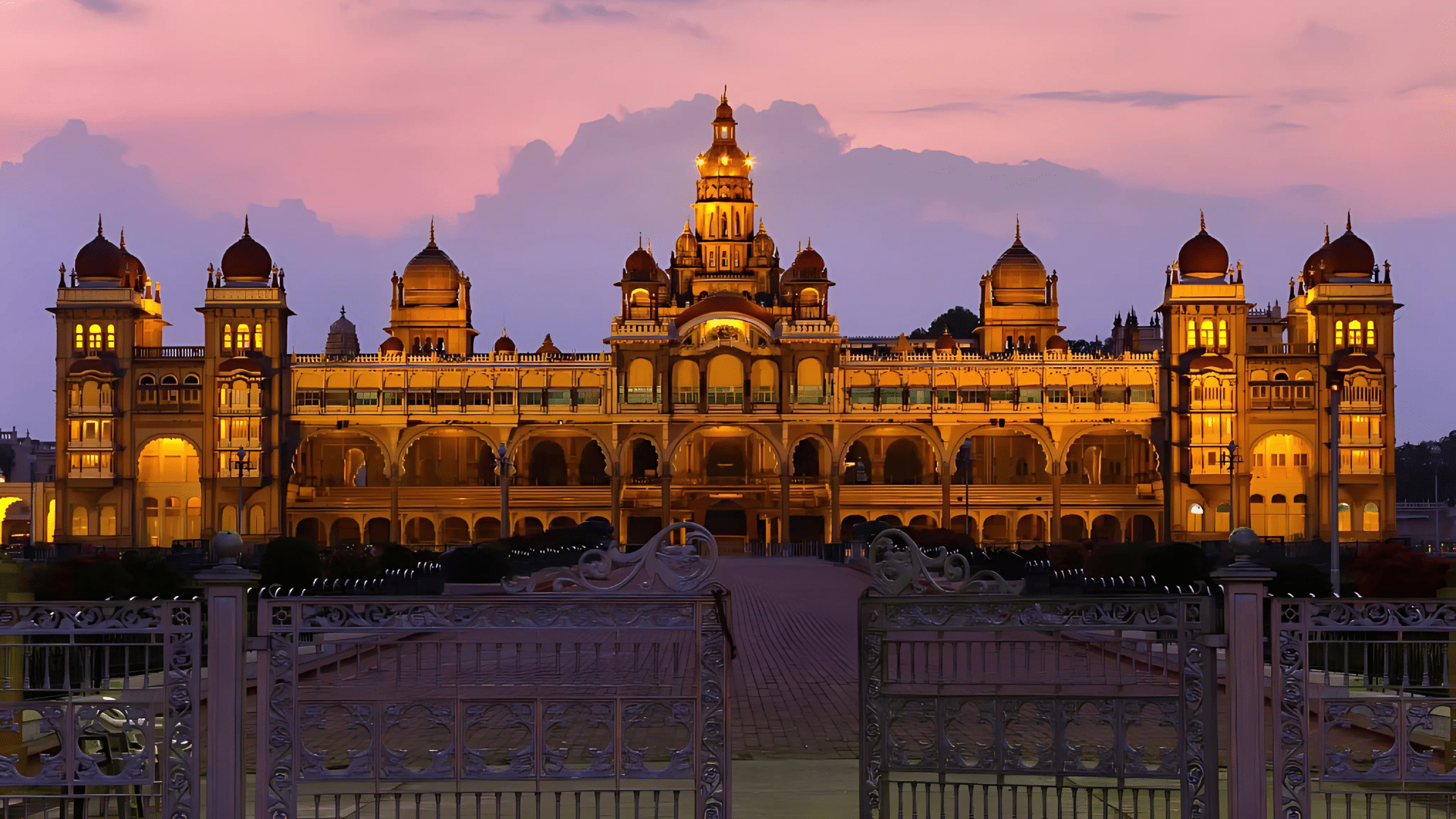
The official home of the Wodeyar dynasty, Mysore Palace blends Hindu, Muslim, Rajput, and Gothic styles.
Its colorful stained glass, carved wooden doors, and ornate ceilings make it one of India’s most visited attractions.
The current palace, built between 1897 and 1912, features pink marble domes and a five-story tower.
The interior showcases rosewood doors inlaid with ivory and floors made of Italian marble.
The palace is illuminated with nearly 100,000 light bulbs on Sundays and holidays, creating a magical sight.
Entrance Fees: ₹200 for foreign tourists; ₹50 for Indian citizens
Timings: 10:00 AM to 5:30 PM
5. Konark Sun Temple
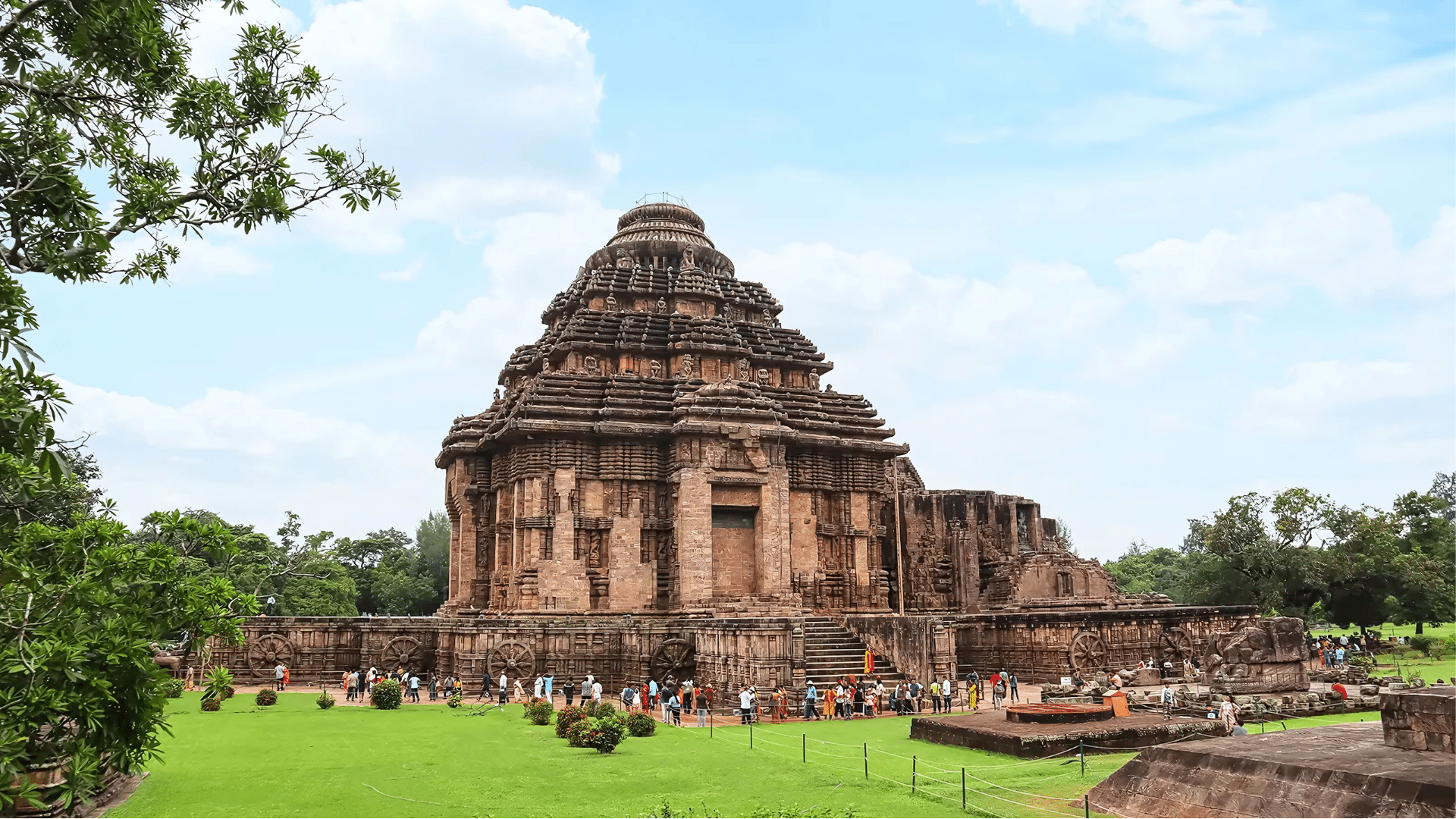
This 13th-century temple in Odisha is shaped like a giant chariot with carved stone wheels, pillars, and walls.
Famous for its erotic sculptures and astronomical precision, it shows the skills of ancient Indian artisans.
Built by King Narasimhadeva I, the temple was designed as a massive chariot for the sun god Surya, with 12 pairs of wheels and seven horses.
Each wheel serves as a sundial. The temple is oriented so that the first rays of the sun fall on the main entrance.
Entrance Fees: ₹600 for foreign tourists; ₹40 for Indian citizens
Timings: 6:00 AM to 8:00 PM
6. Khajuraho Temple
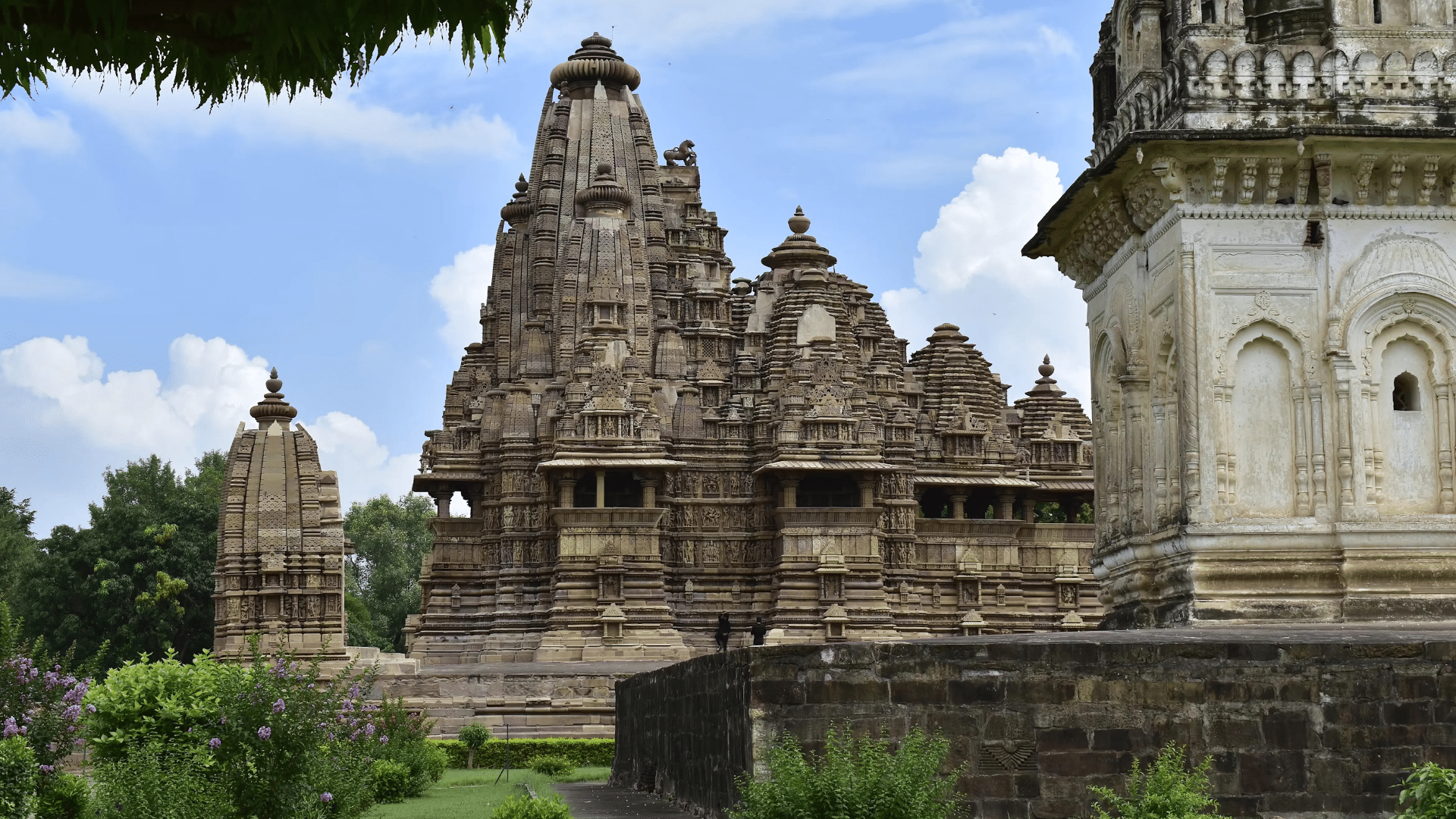
Built between 950 and 1050 CE, these temples in Madhya Pradesh are known for their intricate carvings showing everyday life, mythology, and human relationships.
The Western Group contains the most famous temples. Only about 25 of the original 85 temples have survived.
The Kandariya Mahadeva Temple, dedicated to Lord Shiva, rises 31 meters high and features over 900 statues.
While famous for their erotic sculptures, these represent only about 10% of the carvings; the rest show various aspects of everyday life and divine figures.
Entrance Fees: ₹600 for foreign tourists; ₹40 for Indian citizens
Timings: 8:00 AM to 6:00 PM
7. Meenakshi Temple
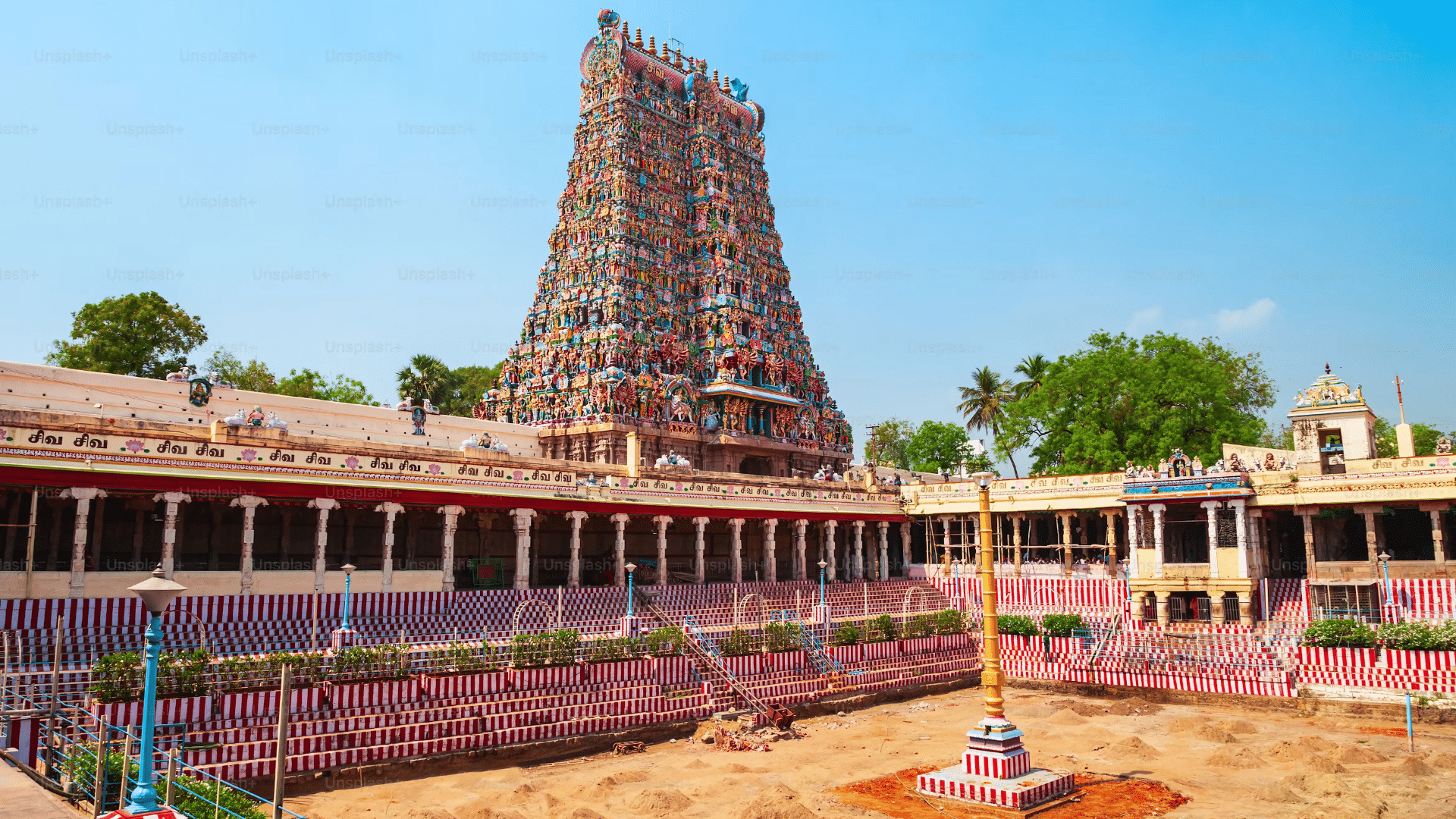
Located in Madurai, this temple dedicated to Goddess Meenakshi has 14 colorful gateway towers (gopurams) covered with thousands of sculpted figures.
Its pillared halls and sacred tank showcase South Indian temple construction.
The temple complex covers 6 hectares and contains 33,000 sculptures. The southern tower is the tallest at 52 meters.
The temple contains numerous mandapams (pillared halls), including the famous Thousand Pillar Hall with 985 carved columns.
Entrance Fees: Free entry (₹100 for camera)
Timings: 5:00 AM to 9:30 PM
8. Hawa Mahal
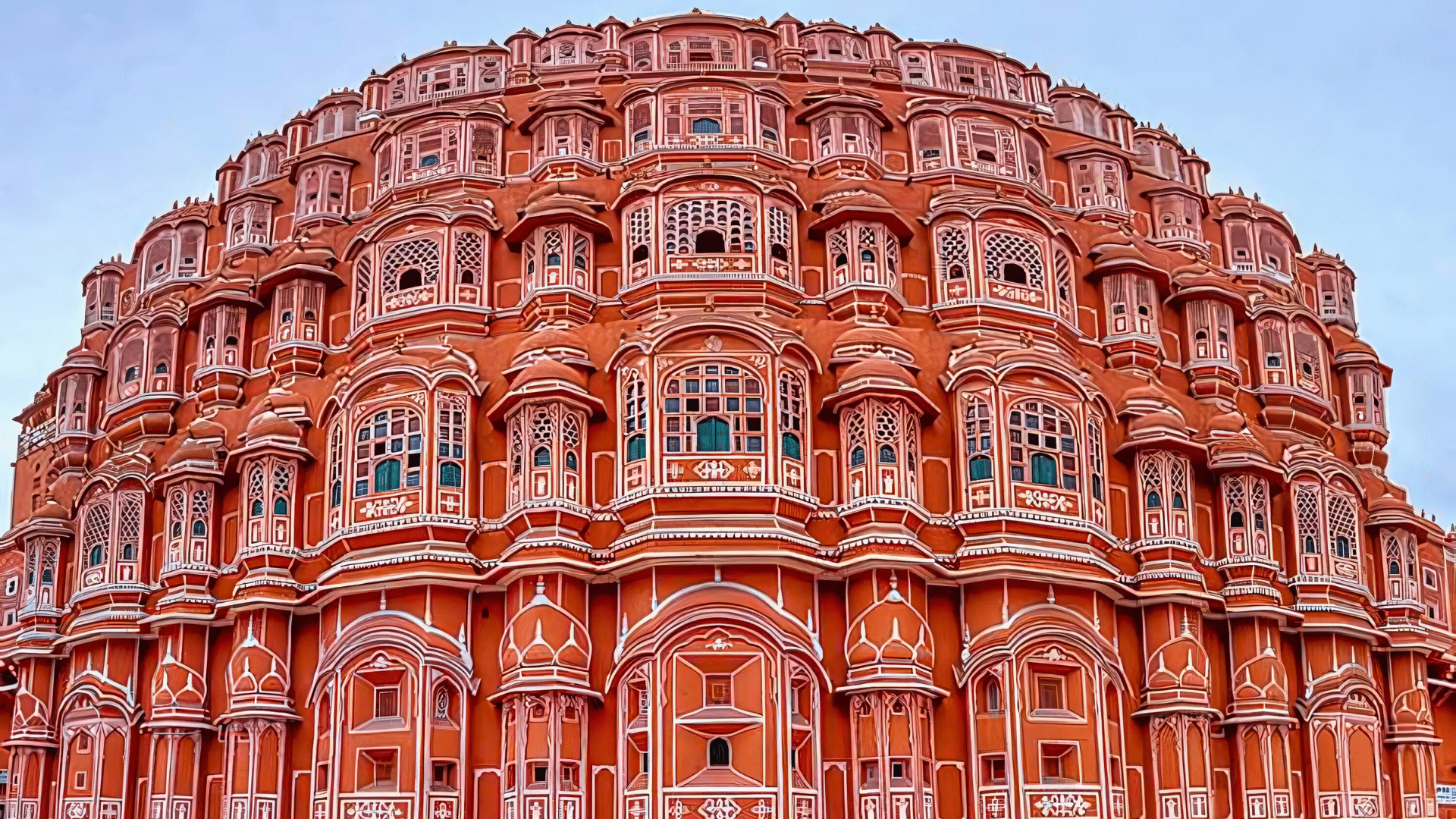
The “Palace of Winds” in Jaipur has a distinctive honeycomb facade with 953 small windows. Built in 1799, it allowed royal women to observe street life without being seen.
The five-story structure is actually only one room deep on most floors.
Its small latticed windows (jharokhas) allowed cool air to circulate and permitted royal ladies to view street festivals while maintaining purdah (female seclusion).
Entrance Fees: ₹200 for foreign tourists; ₹50 for Indian citizens
Timings: 9:00 AM to 4:30 PM
9. Ajanta and Ellora Caves
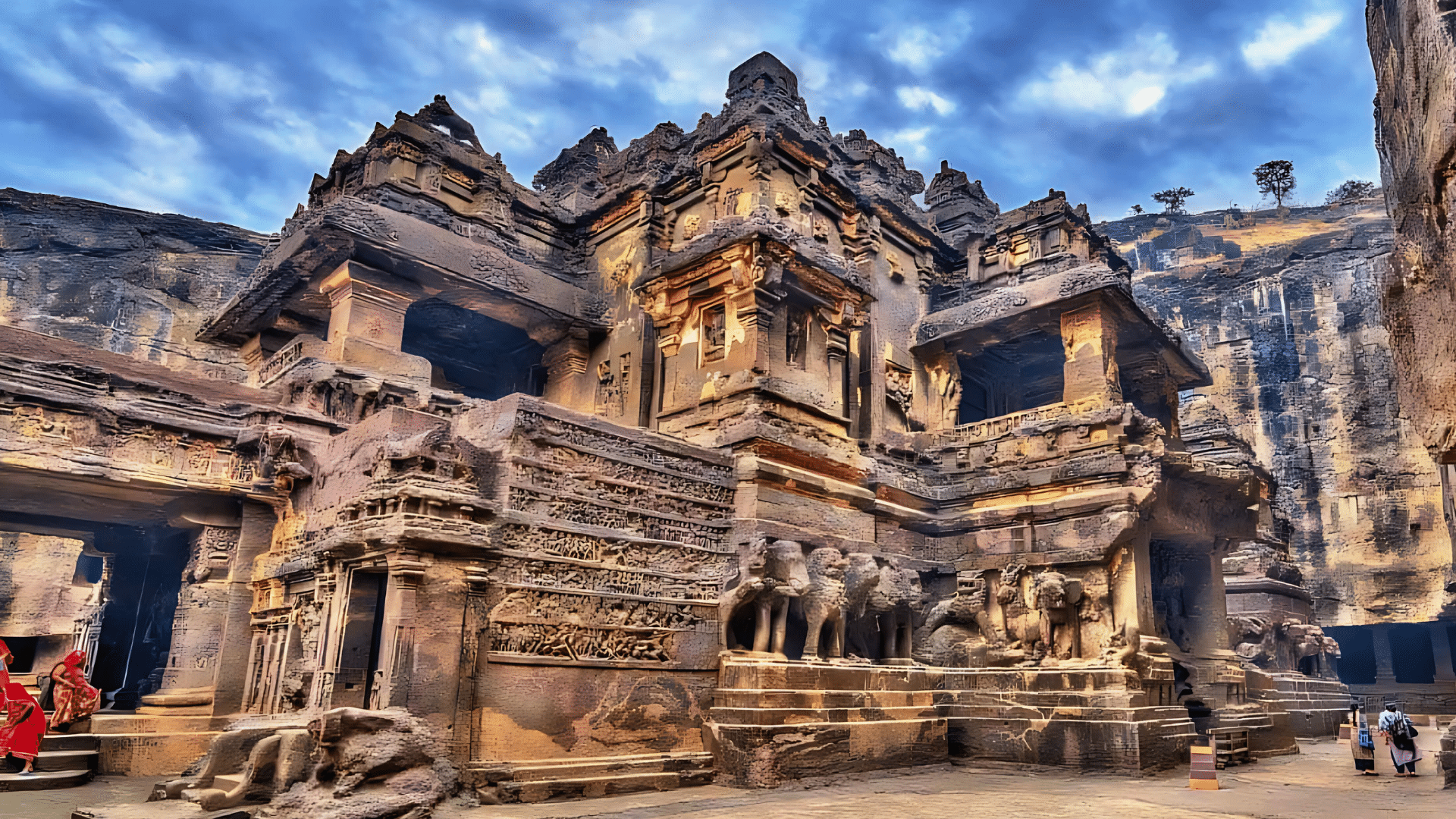
These rock-cut caves in Maharashtra contain paintings and sculptures dating from the 2nd century BCE to the 6th century CE.
Ajanta’s Buddhist paintings and Ellora’s Hindu, Buddhist, and Jain temples show the evolution of Indian art.
The 30 caves at Ajanta were created first and are entirely Buddhist. They remained hidden until their accidental discovery in 1819.
Ellora’s 34 caves represent three different religions. The most spectacular is Cave 16, the Kailasa Temple, a full-sized temple to Shiva carved from a single rock.
Entrance Fees: ₹600 for foreign tourists; ₹40 for Indian citizens
Timings: 9:00 AM to 5:30 PM (closed on Tuesdays)
10. Brihadeeswara Temple

This 1,000-year-old temple in Thanjavur, Tamil Nadu, has one of India’s tallest towers and is built entirely of granite.
Its precision and engineering showcase the heights of Chola construction methods.
Completed in 1010 CE by Raja Raja Chola I, the temple’s vimana (tower) rises 66 meters high and is topped with a single block of granite that has a mass of 80 tons.
The entire structure uses interlocking stones without mortar. A massive Nandi (Shiva’s bull mount) statue, carved from a single stone, measures 6 meters long.
Entrance Fees: Free entry
Timings: 6:00 AM to 12:30 PM and 4:00 PM to 8:30 PM
11. Qutub Minar
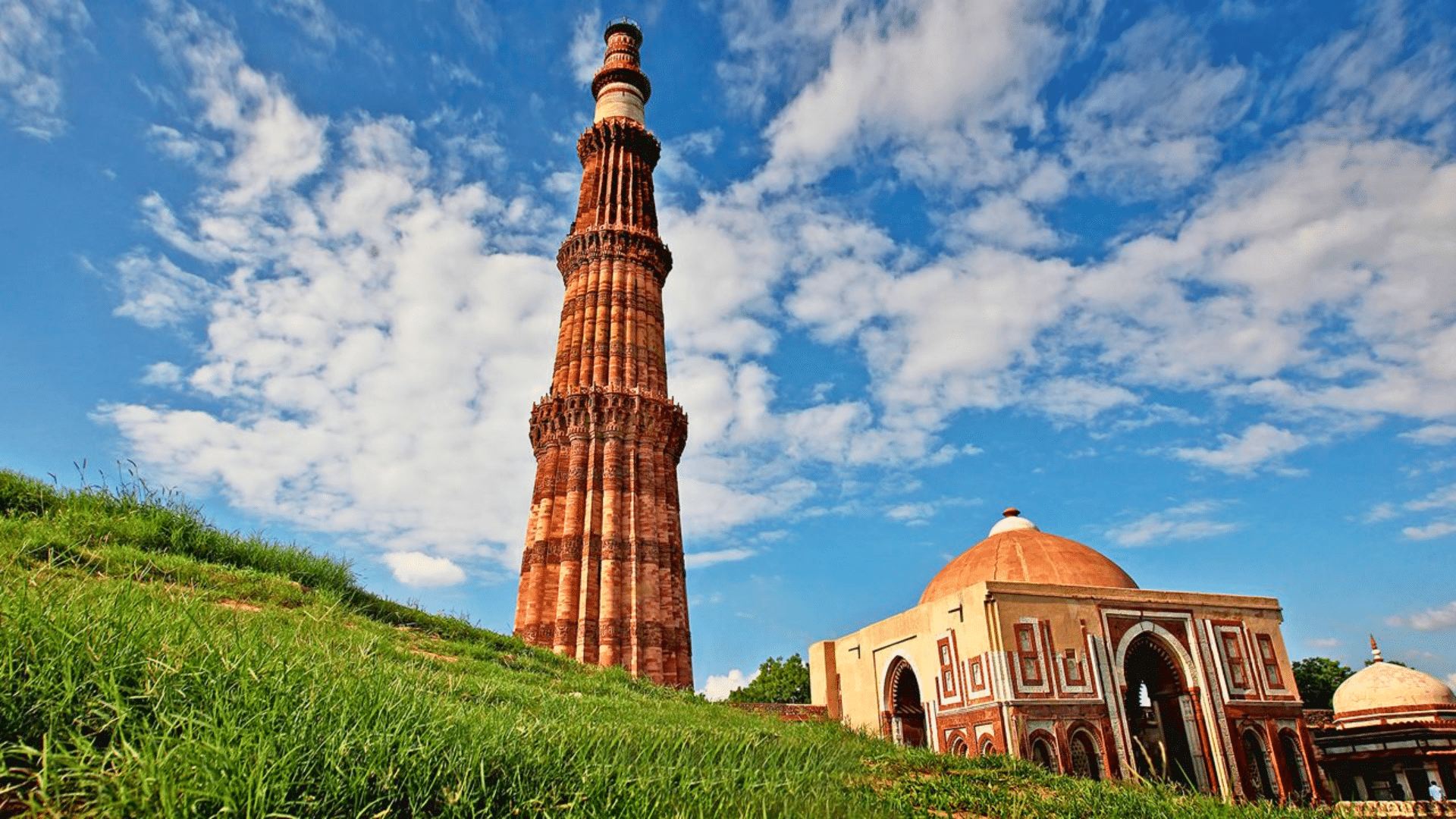
This 73-meter-tall tower in Delhi was built in 1193 to mark the beginning of Muslim rule in India.
The complex includes India’s first mosque and an iron pillar that has not rusted for 1600 years.
The five-story tower features alternating angular and rounded flutings.
The complex also contains the Iron Pillar of Delhi, a 7.2-meter column from the 4th century CE that has remained rust-free due to its advanced metallurgical composition.
Entrance Fees: ₹600 for foreign tourists; ₹35 for Indian citizens
Timings: 7:00 AM to 5:00 PM
12. Jaisalmer Fort
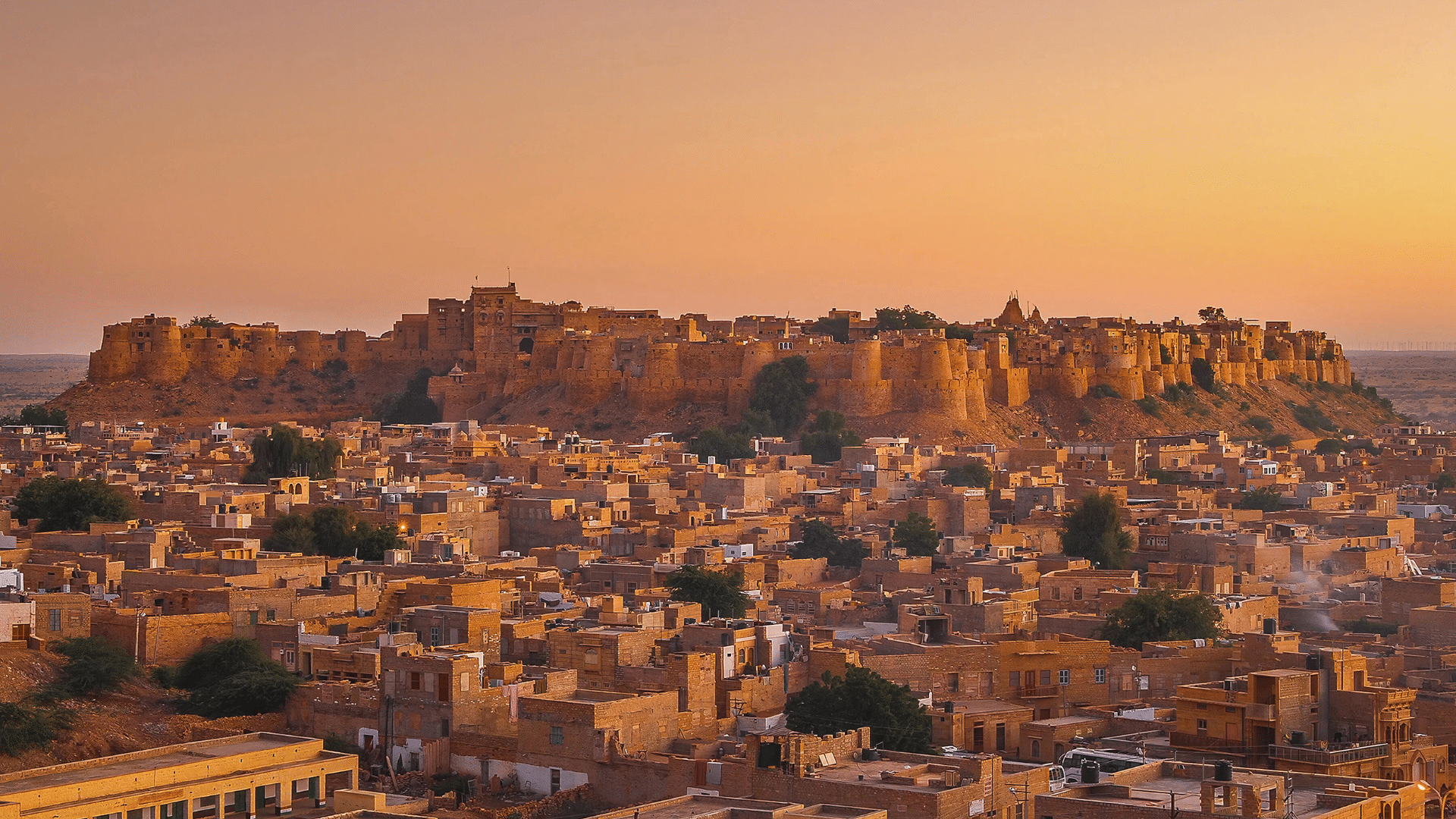
Unlike most forts, this “living fort” in Rajasthan still houses about 4,000 people.
Built in 1156, its golden sandstone walls change color with the sun, giving it the nickname “Sonar Quila” (Golden Fort).
The fort rises from Trikuta Hill with 30-meter high walls and 99 bastions.
Inside, you’ll find the Maharaja’s palace, numerous Jain temples with intricate marble carvings, and havelis (mansions) belonging to wealthy merchants.
Entrance Fees: ₹250 for foreign tourists; ₹50 for Indian citizens
Timings: 6:00 AM to 9:00 PM
13. Lotus Temple
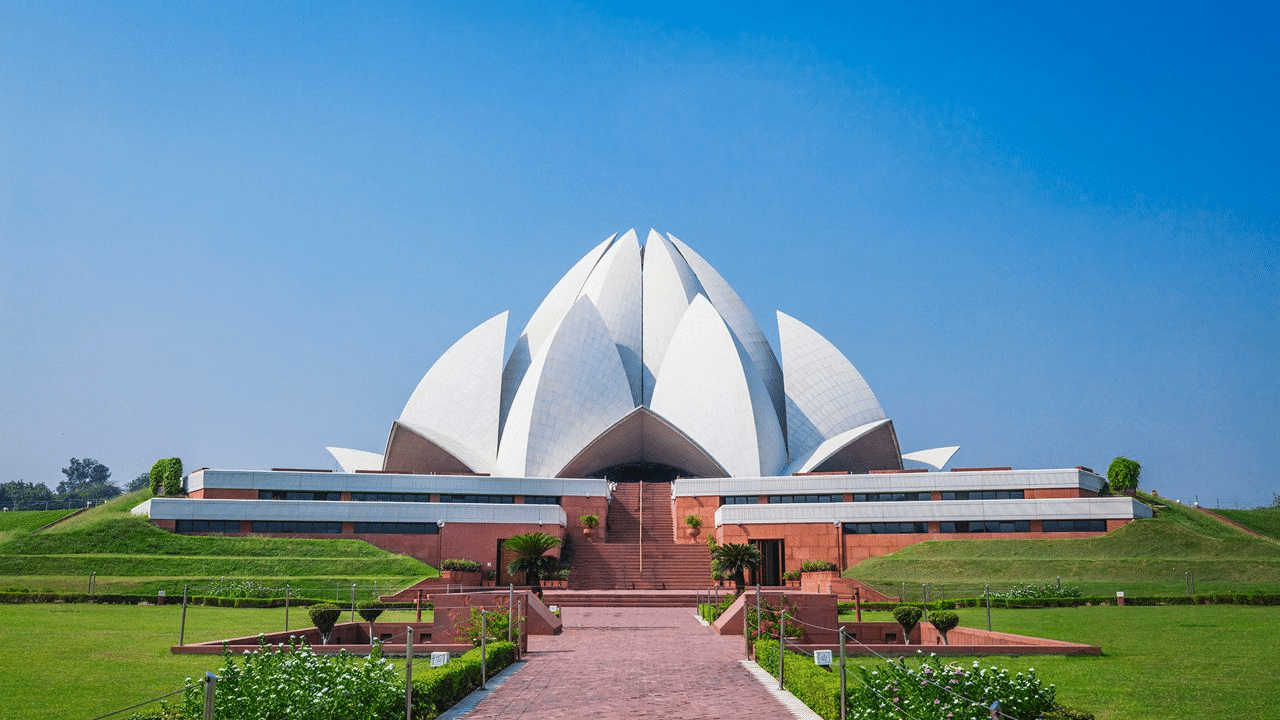
This Bahá’í House of Worship in Delhi is shaped like a lotus flower with 27 marble petals. Completed in 1986, it welcomes people of all religions and combines modern design with symbolic meaning.
The temple is composed of 27 free-standing marble-clad “petals” arranged in clusters of three to form nine sides.
The structure sits on a 26-acre site that includes nine ponds and gardens. Since its opening, it has attracted over 70 million visitors.
Entrance Fees: Free entry
Timings: 9:00 AM to 5:30 PM (closed on Mondays)
14. Victoria Memorial
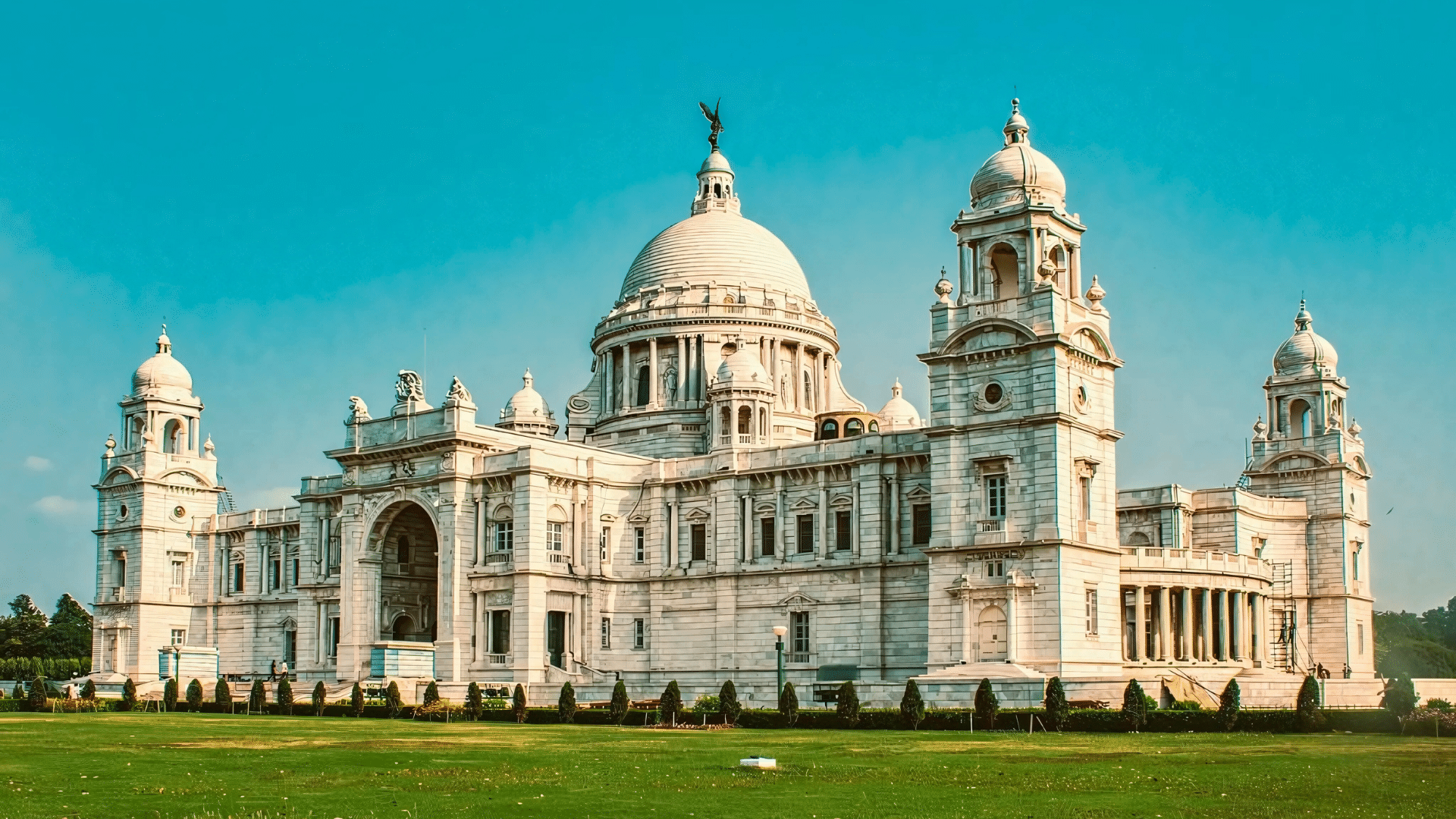
Built between 1906 and 1921, this white marble building in Kolkata combines British, Mughal, and other architectural styles. It houses a museum of Indian history and is surrounded by gardens.
The building blends Italian Renaissance and Mughal elements with a British classical style.
The 56-meter-high structure is built of white Makrana marble, the same material used for the Taj Mahal. The memorial houses a museum with one of the largest collections of colonial-era items in India.
Entrance Fees: ₹500 for foreign tourists; ₹30 for Indian citizens
Timings: 10:00 AM to 5:00 PM (closed on Mondays)
15. Chhatrapati Shivaji Terminus
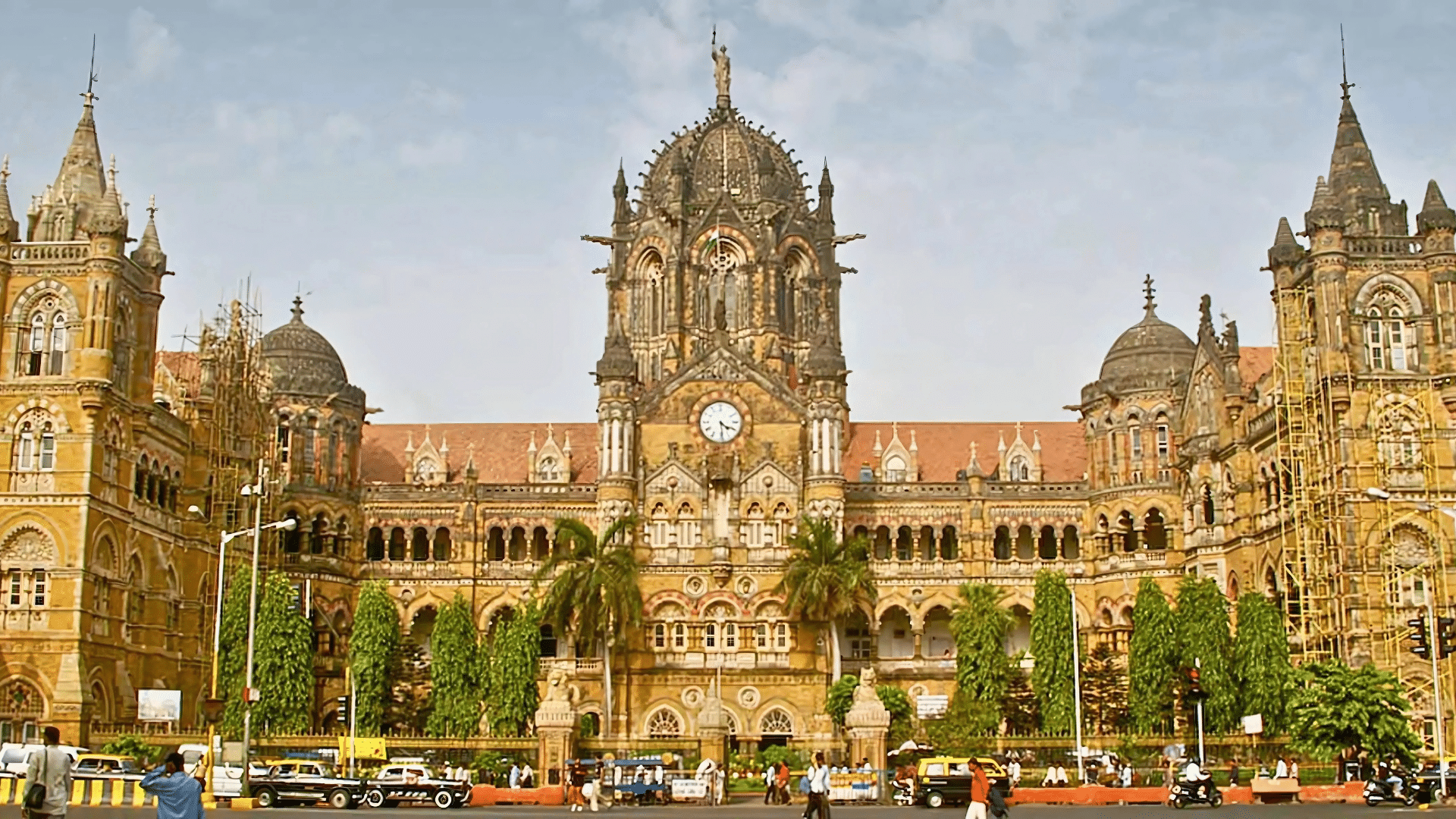
Formerly known as Victoria Terminus, this railway station in Mumbai blends Victorian Gothic and Indian styles.
Built in 1887, its stone dome, turrets, and pointed arches make it a UNESCO World Heritage site.
The building combines elements of traditional Indian palace construction with High Victorian Gothic.
Despite its historical significance, CST remains one of the busiest railway stations in India, handling more than three million commuters daily.
Entrance Fees: No entry fee (working railway station)
Timings: Open 24 hours (museum open 3:00 PM to 5:00 PM)
Building Styles in Indian Structures
Building styles show the mix of many cultures over thousands of years. North Indian designs often use red sandstone and marble with detailed carvings.
South Indian temples stand out with tall towers and stone work that tells stories. Over time, each area added its touch to create the rich mix of styles we see today.
1. Mughal Building Style
Mughal design is known for its balanced layouts, large domes, pointed arches, and detailed decoration.
Besides the Taj Mahal and the Red Fort, other excellent examples include Humayun’s Tomb in Delhi and the Badshahi Mosque in Lahore.
These buildings often include gardens with water features that create a sense of calm and order.
2. Indo-Saracenic Style
This style mixes Indian traditions with European styles, becoming popular during British rule.
The Victoria Memorial in Kolkata is a great example, with its mix of British and Mughal elements.
Other buildings in this style include the Chhatrapati Shivaji Terminus in Mumbai and Mysore Palace.
3. Modern Buildings
After independence, India created its own take on modern design. Le Corbusier’s work in Chandigarh shows clear, simple lines and open spaces.
The Infosys campus in Pune uses glass and steel while including traditional elements.
The Lotus Temple in Delhi, with its flower-like design, combines modern materials with symbolic forms.
Visitor Information Best Times to Visit
October to March offers the most comfortable weather for seeing India’s architecture.
Many sites are open throughout the year, but the summer months (April to June) can be very hot, while the monsoon season (July to September) brings heavy rain.
Transportation Tips
Most major landmarks are in or near big cities with airports and train stations. In cities, taxis, auto-rickshaws, and public transport can take you to these sites.
For remote temples or historic sites, hiring a car with a driver might be the best option.
Nearby Attractions
When visiting the Taj Mahal, make time for the impressive Agra Fort with its red sandstone walls, Fatehpur Sikri’s abandoned city complex, and Itimad-ud-Daulah’s Tomb, often called the “Baby Taj.”
Near the Golden Temple, you can pay respects at the Jallianwala Bagh memorial site, watch the border ceremony at Wagah Border, and learn about Sikh history at the Maharaja Ranjit Singh Museum.
While at the Red Fort, visit the nearby Jama Masjid (India’s largest mosque), shop in the old bazaars of Chandni Chowk, and see Humayun’s Tomb, which has a Persian-influenced design and beautiful gardens.
Conclusion
We’ve taken you through some of India’s most amazing buildings – from the white marble of the Taj Mahal to the golden shine of Amritsar’s temple.
Each place tells its own story about the people who built it and why it matters. These aren’t just old buildings – they’re proof of what humans can create with skill and hard work!
When you visit these spots, you’ll see how different cultures shaped India’s look over thousands of years.
The best part? Many of these places still work just like they did hundreds of years ago.
We hope this guide helps you plan your next trip to see these wonderful places.

